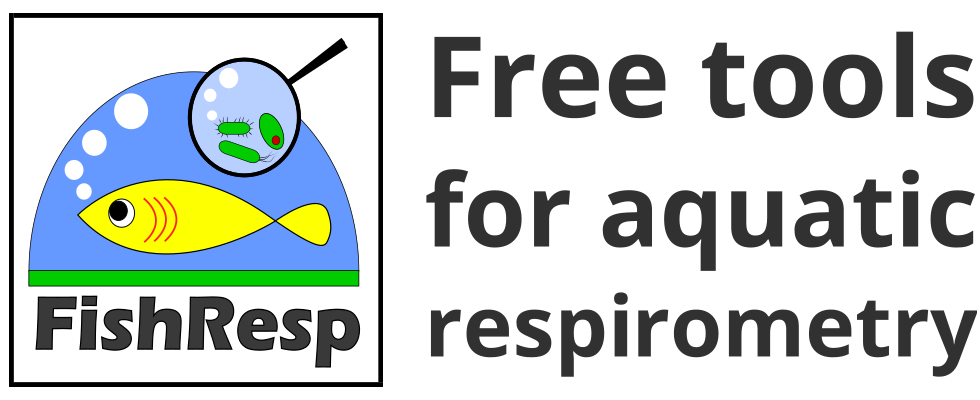Software version: 1.0.3
Authors: Sergey Morozov & R.J. Scott McCairns
Description
The R package ‘FishResp’ calculates metabolic rate of fish and other aquatic organisms measured using an intermittent-flow respirometry approach. The tool is used to run a set of graphical QC tests of raw respirometry data, correct it for background respiration and chamber effect, filter and extract target values of absolute and mass-specific metabolic rate. Experimental design should include background respiration tests and measuring of one or more metabolic rate traits. The package allows a user to import raw respirometry data obtained from ‘AquaResp’ (free software), ‘AutoResp’ (‘LoligoSystems’), ‘OxyView’ (‘PreSens’), ‘Pyro Oxygen Logger’ (‘PyroScience’) and ‘Q-box Aqua’ (‘QubitSystems’).
Read more about the idea behind the R package and its description in this academic paper.
Availability
The ‘FishResp’ package is available on CRAN and GitHub.
If you are not familiar with the R language, please check out the graphical implementation of the R package with a user-friendly FishRespGUI.
Manual
The manual was written in the form of an academic paper published in Conservation Physiology in 2019 (DOI: 10.1093/conphys/coz003). In particular, Case Study 1 provides detailed instructions how to use the R package from importing raw data and correcting for background respiration to graphical QC tests and calculating metabolic rate estimates.
The other document for the R package ‘FishResp’ is the reference manual. It contains a detailed description of each R function with code examples.
Citation
If you use the R package ‘FishResp’, please refer to:
Morozov, S., McCairns, R.J.S., Merilä, J. (2019) FishResp: R package and GUI application for analysis of aquatic respirometry data. Conserv Physiol 7(1): coz003; https://doi.org/10.1093/conphys/coz003
Screenshots
The R package ‘FishResp’ is a cross-platform software. It works fine in RGui and Terminal, but be careful with RStudio: a plot window should be large enough for plotting large graphs (just use a display with resolution more or equal to 1920×1080).
Updated by Sergey Morozov, 10 Jul 2020




